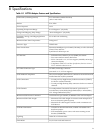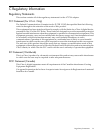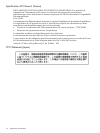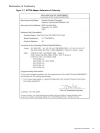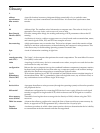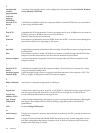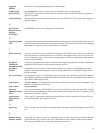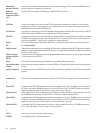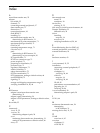megabyte
(MByte)
A measure of computer storage equal to 1024 kilobytes.
motherboard See mainboard. In some countries, the term motherboard is not appropriate.
multi-tasking The initiation and control of more than one sequence of operations. This allows programs to
operate in parallel.
multi-threading The simultaneous accessing of data by more than one SCSI device. This increases the aggregate
data throughput.
N
Non-Volatile
Random Access
Memory
(NVRAM )
An EEPROM used to store configuration information.
O
operating system
(OS)
A program that organizes the internal activities of the computer and its peripheral devices. An
operating system performs basic tasks such as moving data to and from devices and managing
information in memory. It also provides the user interface.
P
parity checking A way to verify the accuracy of data transmitted over the SCSI bus when CRC is not used. One
bit in the transfer is used to make the sum of all the 1 bits either odd or even (for odd or even
parity). If the sum is not correct, an error message appears. SCSI uses odd parity for data transfer
rates less than 160 MB/s.
peripheral
component
interconnect (PCI)
A local bus specification that allows connection of integrated peripheral controller components,
peripheral add-in boards, and processor/memory systems.
peripheral
devices
A hardware device (such as a video monitor, disk drive, printer, or CD-ROM) used with a
computer and under the computer’s control. SCSI peripherals are controlled through a SCSI
host bus adapter.
pin-1 orientation The alignment of pin 1 on a SCSI cable connector and the pin 1 position on the SCSI connector
into which it is inserted. External SCSI cables are keyed to ensure proper alignment, but internal
SCSI ribbon cables might not be.
port address Also port number. The address through which commands are sent to a host bus adapter. This
address is assigned by the PCI bus.
port number See port address.
Processor
Dependent Code
(PDC)
The system firmware on HP PA-RISC systems. It provides basic read/write capability. Usually
kept as firmware (ROM based). The system firmware on the main board of a computer is used
to boot and control the system.
programmed
input/output
(PIO)
A way the CPU can transfer data to and from memory via the computer’s I/O ports. PIO can
be faster than DMA, but requires CPU time.
Q
queue tags A way to keep track of multiple commands while allowing increased throughput on the SCSI
bus.
R
Random Access
Memory (RAM)
In general, the computer’s primary working memory in which program instructions and data
are stored and are accessible to the CPU. Information can be written to and read from RAM.
The contents of RAM are lost when the computer is turned off.
79



